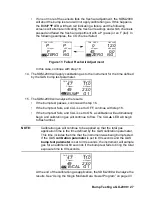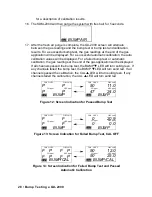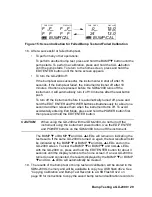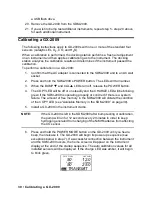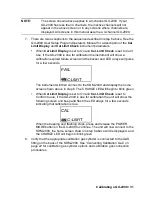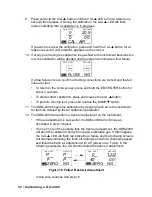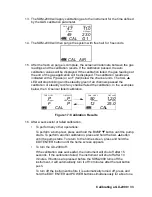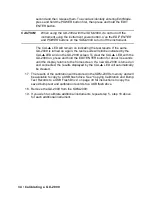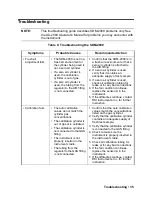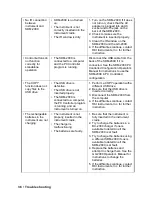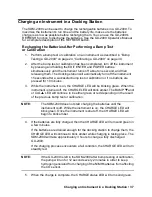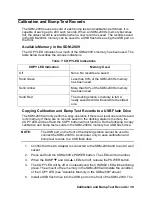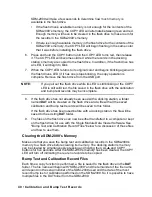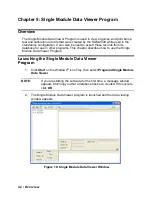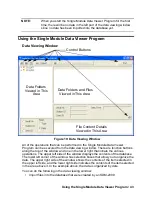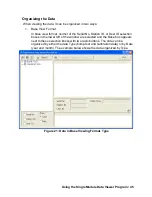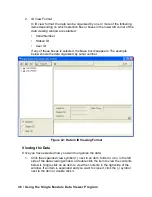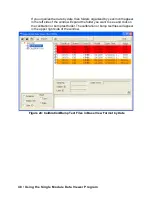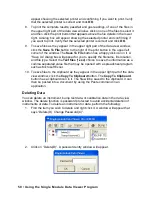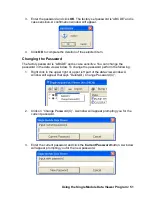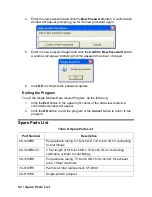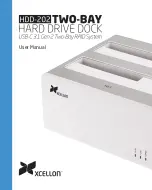
Calibration and Bump Test Records • 41
The files that an SDM-2009 saves to a USB flash drive are structured so that they can
be imported into a database controlled by the Single Module Data Viewer Software.
See “Importing Files Into the Database” on page 44 for instructions to add files to the
database.
Bump Testing or Calibrating and Saving Files To a Flash Drive
Multiple Times In One Day
The SDM-2009 assigns file names to calibration and bump test record files based on
the day of the most recent calibration or bump test record saved in the docking
station’s memory. If bump tests or calibrations are performed, a copy operation is
performed, then additional bump tests or calibrations are performed, and another
copy operation is performed with the same flash drive all on the same day, the
existing file on the flash drive from the first copy operation will be overwritten by the
file from the second copy operation because its name will be the same as the new
file. In this case, no information is lost since the second file saved to the flash drive
includes all the records that were in the first file.
However, if bump tests or calibrations are performed, a copy operation is performed,
and
the SDM-2009’s memory is cleared
, then additional bump tests or calibrations
are performed, and another copy operation is performed with the same flash drive all
on the same day, this will result in the information in the file from the first copy
operation being lost. This is because the file saved to the flash drive in the second
copy operation only includes records since the memory was cleared and when it
overwrites the file from the first copy operation, all the information in the first file is
lost.
CAUTION:
If performing bump tests or calibrations and copying an SDM-2009’s
memory to a flash drive multiple times during the same day and the
SDM-2009’s memory is cleared, transfer the calibration/bump test
record files from the flash drive to a computer hard drive or some other
memory device before performing another copy operation to avoid loss
of data.

